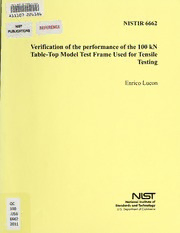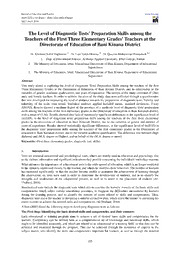
ERIC EJ1095747: The Level of Diagnostic Tests' Preparation Skills among the Teachers of the First Three Elementary Grades' Teachers at the Directorate of Education of Bani Kinana District PDF
Preview ERIC EJ1095747: The Level of Diagnostic Tests' Preparation Skills among the Teachers of the First Three Elementary Grades' Teachers at the Directorate of Education of Bani Kinana District
Journal of Education and Practice www.iiste.org ISSN 2222-1735 (Paper) ISSN 2222-288X (Online) Vol.7, No.9, 2016 The Level of Diagnostic Tests' Preparation Skills among the Teachers of the First Three Elementary Grades' Teachers at the Directorate of Education of Bani Kinana District Dr. Kholoud Subhi Yaghmour 1* Dr. Luai Taleb Obaidat 2* Dr. Qaseem Mohammad Hamadneh 1,3 1. Dep. of Educational Science, Al-Balqa Applied University, Irbid College, Jordan 2. The Ministry of Education, Irbid, Educational Directorate of Bani Kinana, Department of Educational Supervision 3. The Ministry of Education, Irbid, Educational Directorate of Bani Kinana, Department of Educational Supervision Abstract This study aimed at exploring the level of Diagnostic Tests' Preparation Skills among the teachers of the first Three Elementary Grades at the Directorate of Education of Bani Kinana District, and its relationship to the variables of gender, academic qualification, and years of experience. The sample of the study consisted of (264) male and female teachers. In order to achieve the aims of the study, data were collected through a questionnaire that was developed for measuring the level of attitudes towards the preparation of diagnostic tests. Validity and reliability of the scale were tested. Statistical analyses applied included means, standard deviations, 3-way ANOVA. Results showed a medium degree of the presence of a moderate level of diagnostic tests' preparation skills among the teachers of the first elementary grades in the Directorate of education in Bani Kenanah district, with a mean of (3.56). Results showed also lack of statistically significant differences at the significance level of (α≤0.05), in the level of diagnostic tests' preparation skills among the teachers of the first three elementary grades in the directorate of education in Bani Kenanah District, due to the variables of gender and number of years of experience. Results showed statistically significant differences, at the significance level of (α≤0.05) in the diagnostic tests' preparation skills among the teachers of the first elementary grades in the Directorate of education in Bani Kenanah district, due to the variable academic qualification. The difference was between (high diploma) and (M.A. degree or Higher), and on behalf of the (M.A. degree or more). Keywords: (First three elementary grades, diagnostic test, skills). 1. Introduction Tests are essential educational and psychological tools, which are widely used in education and psychology, due to the various information and significant indications they provide concerning the individuals' traits they measure. What enhances the importance of achievement tests is the wide spread of education, which is no longer restricted to the minority supervised closely by the teacher, and whom he modifies their behaviors. The number of learners has increased significantly, so that the teacher became unable to guarantee the achievement of learning through the observation; so, tests were used in order to determine the development of students, and in to identify the strengths and weaknesses of the educational process, as well as to assist in the placement of students (Al- Thubaiti, 2014). Standardized tests include the diagnostic tests which aim to examine the learners' mastery of the basic skills and competencies which reflect certain educational outcomes; to diagnose the difficulties encountered by learners during the learning process, and to identify the sources of errors related to skills and competencies. Thus, diagnostic tests assist the teacher in designing a suitable corrective plan, which assist the learner in correcting his errors in order to achieve the desired skills and competencies (Al-Thubaiti, 2014). A'llam (2007) listed the following steps in developing diagnostic tests as follows: The First Step: Identifying the basic desired skills and competencies, and their contents: Each educational or training program aims to achieve a set of desired basic skills and competencies for the learners. Competency can be defined here as a comprehensive set of knowledge and functional skills, which ought to be identified accurately, and which are related to an educational or a training field, so that they can be achieved and measured through the program. This can be achieved through the assistance of experts in the subject matter, who identify the skills and competencies important for learners, as well as through the detailed 155 Journal of Education and Practice www.iiste.org ISSN 2222-1735 (Paper) ISSN 2222-288X (Online) Vol.7, No.9, 2016 analysis of the content of the curriculum or the training topic, and evaluating the needs of the targeted group. And in training, the identification of the desired skills can be achieved through the analysis of the job content. The identification of the skills and competencies requires a set of considerations related to the scope of the skill, its learnability, and the transferability of impact, and the representation of the desired end behavior. The first step is not enough for developing a diagnostic test. The basic skills are intricate outcomes, which incorporate information and mental, psychological and motor process, thus, they require an analysis which organize their content and reveals the relations among them. The Second Step: Analysis of Basic skills and Competencies in order to identify their components: There are several methods for analyzing the competencies, which include: the hierarchical analysis of skill, which identifies the secondary skills and information which ought to be learned in an ordered, consecutive, and hierarchical manner, in order to achieve the desired basic competency. For the purposes of conducting this analysis, we ought to ask ourselves: what are the requirements and behavioral components needed for the learner in order to be able to achieve the basic skill? After the identification of the requirements, we repeat the question for each of its components, so that we are able to identify the behavior acquired by the learner. The requirements should be organized hierarchically based on their contribution to the development of the basic skill or competency, so that the input behavior can be considered as the base of the pyramid, upon which the levels of behavior are organized from the most simple into the most intricate and difficult, till we reach the top of the pyramid, which represents the basic skill. However, it's necessary to be knowledgeable about learning methods prior to conducting the analysis. The Third Step: Formulating the Behavioral Aims: Next, the behavioral aims related to the results of analysis are formulated. Those results incorporate skills and knowledge, whose identification assists in formulating the procedural and behavioral outcomes, which can be noticed directly and measured through the items of exams. The diagnostic test is criterion referenced test, whose development depends on the behavioral aims which identifies accurately the outcomes of the educational process beyond doubt. Thus, the formulation of aims is related to the basic skills identified. They incorporate usually four elements: description of expected behavior, the referential content, conditions of performance, and the level of performance. The Fourth Step: Constructing the Items of the Test This step requires a complete knowledge about the methods for selecting the most appropriate items which measure the behavioral outcomes identified directly, and which requires also the mastery of the content of the educational or training program, as well as the characteristics of the learners. This is due to the fact that those items discriminate between those who were capable of achieving the aims and those who had encountered difficulties, and diagnose the errors and gaps of the educational process. The importance of diagnostic tests is related to (Jerusalem Open University, 2000): that they are analytical to an extent which exceeds the capabilities of ordinary teachers, they make teachers more attentive to the important elements in the educational process, in addition to its steps and the expected difficulties. Diagnostic tests save also the time and effort of the teacher, which are related to the diagnostic process, and provides him with ample time for corrective teaching, and they assist learners in identifying their educational needs through their emphasis on his errors in a regular manner, and they provide the students with programs for corrective teaching, or relevant recommendations, which saves his time and effort and contributes to organizing the educational process. And for the diagnostic tests to be highly effective, they ought to have the following features (Al-Mugrabi, 2008): - They have to be a part of the curriculum, whose aims are clearly defined. - They require that the items of the test have direct responses, which are functional to the highest degree possible. - The tests ought to be analytical, based on the experimental data related to learning difficulties and the difficult topics. - The tests ought to reflect the mental processes of the learner sufficiently, so that they enable the identification of the errors. - The tests ought to provide their users with corrective means for each identified error. - The tests ought to be designed so that they cover a long series of learning in an organized manner. 156 Journal of Education and Practice www.iiste.org ISSN 2222-1735 (Paper) ISSN 2222-288X (Online) Vol.7, No.9, 2016 2.1. Problem and Questions of the Study Due to the importance of the diagnostic tests in measuring and assessing the achievement of students, and the importance of the mastery of the principles of developing diagnostic tests by the teachers, who are responsible for monitoring the students and evaluating and correcting their development, and reporting their progress, the teacher contributes to success or failure of the educational process, through preparing and implementation of diagnostic tests. The researchers noticed some shortcomings in the process of preparing the diagnostic tests among the teachers of the first three grades, which is one of their essential responsibilities, this study aimed at exploring the level of mastery of the principles of developing diagnostic tests among those teachers at the directorate of education in Bani Kenanah district. Specifically, this study aimed to answer the following questions: - What is the level of mastery of the skills of preparing diagnostic tests among the teachers of the first three elementary grades in the directorate of education in Bani Kenanah district? - Are there statistically significant differences at the sig. level of (α=0.05) in the mastery of the skills of preparing diagnostic tests among the teachers of the first three elementary grades in the directorate of education in Bani Kenanah district due to the variables of (academic qualification, gender, years of experience)? 2.2. Importance of the Study: Diagnostic tests are among the modern educational methods, which were adopted by the ministry of education, because of its important features, which are reflected in their emphasis on previous learning and prerequisites, and dealing with the individual differences among the students, through variation the activities and methods, and the identification of the educational activities which achieve the educational aims, the identification of the students' expected errors, as well as the expected difficulties, and the variety of modern learning strategies, enhancement of strengths and solving weaknesses among the students. The importance of the present study is related also to the fact that it is one of the first studies which explore the mastery of the skills of preparing the diagnostic tests among the teachers of the first three grades in the directorate of education in Bani Kenanah district. The importance of the study is also related to the importance of its results in the light of which the future of the students is determined, as well as the importance of the role to be played by the student of the first three elementary grades in terms of the their self- developments through reading about how to prepare diagnostic tests and their role in compensating for the weaknesses of students in the previous skills. 2.3. Aims of the Study: This study aims to explore the level of mastery of the skill of preparing the diagnostic tests among the teachers of the first three elementary grades at the schools in the Bani Kenanah district, and to explain the attitudes of the participants of the study on the items of the scale of the study, which are related to the attitudes about the mastery of the skill of preparing the diagnostic test as a whole, due to the variables of: gender, number of years of experience, and the academic qualification. 2.4. Scope and Limitations of the Study: This study is restricted to the skills required for the preparation of the diagnostic tests among the teachers of the first three grades, which are included in the study, which consists of (25) items, which was prepared for the measurement of the mastery of those skills among the teachers of the first three elementary grades at the public schools in the directorate of education in Bani Kenanah District. 2.5. Operational Definitions: Diagnostic Test: exploring the level of students' mastery of the skills he learned in the previous educational stages, and the identification of the strengths and weaknesses, through which the corrective plan is prepared for the improvement of the educational process. Teachers of the first Three Grades: the persons employed by the ministry education in the public schools of Bani Kenanah, who are responsible for teaching the students of those grades, and for assisting the students in acquiring the educational skills required for the cognitive, mental, emotional and performative development. The First Three Grades: the first stage of elementary education, which lasts for three academic years from the first grade to the third grade, and in which education is compulsory. Skills: the set of knowledge learned previously by the students, which are related to the curriculum of the first three grades in reading, writing and Maths. 157 Journal of Education and Practice www.iiste.org ISSN 2222-1735 (Paper) ISSN 2222-288X (Online) Vol.7, No.9, 2016 3.6. Review of Literature: The following are some of the studies which explored the diagnostic tests: Casmir (2014) conducted a study which aimed at exploring the relationship between the performance of students in the scores of constructive and diagnostic tests at secondery schools. The population of the study consisted of (1956) students at the secondery schools, who were learning Biology in the academic Year 2008/2009. The random sample was used, and the sample of the study consisted of (650) students from (14) schools. The data collecting methods included the documents related to the constructive and diagnostic tests. Based on the analysis of data, the results revealed that the scores in the tests at seven out of ten schools, were statistically significant, and the relationship was statistically significant at the mixed and boys' schools, and statistically insignificant at the girls' schools. Fhloinn, & Bhaird & Nolan (2014) aimed to determine the students' mathematical knowledge on entry. It aimed also to provide an early indication of which students are likely to need additional help, and hopefully encourage such students to avail of extra support mechanisms at an early stage. A questionnaire was developed to explore students’ perspectives on diagnostic testing. Analysis of responses received to the questionnaire provided an interesting insight into students’ perspectives including the optimum time to conduct such a test, their views on the aims of diagnostic testing, whether they feel that testing is a good idea, and their attitudes to the support systems put in place to help those who scored poorly in the test. Al-Thubaiti (2014) sought to develop a criterion referenced diagnostic test to measure the teachers ability at developing personal tests in the subject of computer sciences, through the identification of the psychometric properties of the criterion referenced test. The researcher used the descriptive method, through the use of a cluster random sample which represents the population of the study. The results of the study showed the presence of a low level of teachers' mastery of the skills related to the development of achievement tests for the computer science, and the presence of statistical significant differences on behalf of those with more years of experience, as well as statistically significant differences based on the qualification, on behalf of the educational master of arts; additionally statistically significant differences were related to the training courses, and on behalf of the multiple training courses. The study of Al-Tarawneh (2003), aimed to explore the impact of the using Arabic Grammar in diagnostic method, compared to the ordinary method, on the learning of Grammar among Ninth graders at the schools in the directorate of Irbid city center. The researcher chose a sample consisting of (146) male and female students, from two schools, who were selected randomly and divided into two groups, one of which studied through the use of the diagnostic method, while the other group studied through the use of the ordinary method. The results showed that the scores of the students who studied through the diagnostic method, were higher than the scores of the students who studied through the use of the ordinary method, as well as the presence of statistically significant differences ascribed to the method of treatment. Al-Gamri (1998) examined the level of the knowledge of the elementary grades female teachers in Yemen about the skills required for the preparation of the school tests and their attitudes towards them. The sample of the study consisted of (525) elementary teachers at the schools of the capital city, and two tools were used: the test which was used to measure the skills of the teachers in preparing tests which was developed by Jaradat (1988), the second tool is the scale of the teachers' attitudes towards the school tests, which was developed by Awdeh (1990). The results showed that the level of knowledge among the elementary grade teachers was below the acceptable level, and that the knowledge of the holders of the three degrees (College diploma, Teachers' institute, secondery school). The results showed also that teachers have positive attitudes towards the school tests, and that gender and experience have their impacts on the attitudes, however, in terms of the qualifications, the results showed that B.A teachers have more positive attitudes in comparison to the other qualifications. Ismail (1995) investigated the impact of the corrective diagnostic tests on the ability to solve mathematical problems in Malaysia. The researcher categorized the aims of the test based on significance, and used another categorization for the development of diagnostic items which correspond to each aim, so that the tests incorporate the linguistic, planning, strategic and algorithmic aspects. The sample of the study included (1255) students in Malaysia. The test showed a high reliability, which applies also to aims and items. The results were examined in terms of four dimensions: face validity factors, factors related to construct validity, the factors related to the topic, and the difference between the external elements and the topic of the study. The study concluded that significant relationships exist between the corrective diagnostic tests and the students' ability at solving the mathematical problems. Jason (1985) explored the impact of using diagnostic tests, and additional scaffolding physics' lessons on the 158 Journal of Education and Practice www.iiste.org ISSN 2222-1735 (Paper) ISSN 2222-288X (Online) Vol.7, No.9, 2016 achievement of the students in physics. (97) Students participated and were classified into two groups: a control and an experimental group. The results of the study revealed a statistically significant impact of the diagnostic tests and scaffolding lessons on the achievement of students in physics, in addition to the retention of the information by the students when diagnostic tests are used, in addition to the corrective learning. Waught (1985) examined the effect of using diagnostic tests through the microcomputer on the achievement of students and their attitudes. The population of the study included 9th and 10th grade students, who studied Biology for three consecutive semesters, and were taught using two different methods in the state of Georgia. The study employed two levels of treatment, an experimental and a comparative. The experimental group was taught through the microcomputer, and 30 minutes were dedicated to diagnostic tests. The comparative group was taught through behavioral aims in addition to extra activities, in addition to the preparation of publications, posters, and reports to be carried out within (30-60) minutes. The results showed that the computerized diagnostic tests have a positive impact on increasing the achievement of students in science. 3.7. Comment on the Previous Studies: The review of literature showed that most of the studies were conducted in settings outside Jordan, and their results showed that diagnostic tests were useful in improving the knowledge of students among both teachers and students, as this method emphasizes the importance of individualized instruction, which keeps up with the developments of modern age. However, some studies explored the impact of diagnostic tests and the attitudes of teachers towards them, and the present study employed the literature in developing the theoretical framework of the study, and the tool of the study. 4.1. Sample of the Study: The sample of the study consisted of (264) first three elementary grades' teachers at the public schools in directorate of education in Bani Kenanah district, who were chosen randomly, and table (1) shows the demographic characteristics of the participants of the study, according to the personal and professional variables: Table (1): The distribution of the participants of the study according to the personal and professional variables: Variables category frequency percentage Gender Males 41 15.53 Females 223 84.47 Total 264 100 Number of Years of Experience Less than 5 years 96 36.36 5-10 years 100 37.88 More than ten years 68 25.76 Total 264 100 Academic Qualification B. A 131 49.62 High Diploma 75 28.41 M.A or Higher 58 21.97 Total 264 100 Table (1) shows that: - Concerning the variable of gender: we notice that the female teachers of the first three grades in the directorate of education in Bani Kenanah district have the highest frequency (223), with a percentage of (84.47%), while male teachers have the lowest frequency (41), and a percentage of (15.53%). - Concerning the variable of years of experience: we notice that the teachers of the first three grades in the directorate of education in Bani Kenanah district with (5-10) years of experience, have the highest frequency (100), with a percentage of (37.88%), while teachers with more than ten years of experience have the lowest frequency (68), and a percentage of (25.76%). - Concerning the variable of academic qualification: we notice that the teachers of the first three grades in the directorate of education in Bani Kenanah district with a B.A degree have the highest frequency (131), with a percentage of (49.62%), while teachers holding an M.A certificate or higher have the lowest frequency (58), 159 Journal of Education and Practice www.iiste.org ISSN 2222-1735 (Paper) ISSN 2222-288X (Online) Vol.7, No.9, 2016 and a percentage of (21.97%). 4.2. Tool of the Study: The tool of the study is a questionnaire, consisting of (18) items, which were completed by the teachers of the first three elementary grades in the directorate of education in Bani Kenanah District. 4.3. Validity of the Scale: The items of the questionnaire were reviewed by a panel of experts, which consisted of (9) faculty members at the Jordanian universities, with PhD. In curricula, educational administration, assessment and evaluation, as well as a number of educational supervisors in maths, elementary education, and a group of teachers of the first three elementary grades, for the purposes of checking the validity of the items. Based on the comments of the experts, five out of (23) items were removed, so that the final version of the questionnaire consisted of (18) items. 4.4. Reliability of the Scale: In order to test the reliability of the scale of the study, test-retest method was used, with an interval of two weeks between the first and second administration of the tool on a pilot sample consisting of (24) male and female teachers of the first three elementary grades in the directorate of education in Bani Kenanah district, from out of the sample of the study. Cronbach alpha coefficient for the scale as a whole was (0.87), which is an acceptable value for the purposes of the current study, being higher than (0.70). 4.5. Variables of the Study: 1. The independent variables: - Gender: which has two categories (male, female). - Number of years of experience: with three categories (less than five years (5- years), from 5-10 years, and more than 10 years 10+). - Academic Qualification: with three levels (B.A, High Diploma, M.A or higher). 2. The dependent variables, which included the level of mastery of the skills of preparing diagnostic tests among the teachers of the first three elementary grades in the directorate of education in Bani Kenanah district, which is calculated through the scores of the participants in the sample of the study on the items of the scale of the mastery of the skills of preparing diagnostic tests among the teachers of the first three elementary grades, developed by the researchers. 4.6. Procedures of the Study: The researchers reviewed the relevant literature and the previous studies, and their tools, in order to develop an appropriate tool. The tool was reviewed and tested in terms of its validity and reliability, and the permissions for conducting the study were given through the directorate of education in Bani Kenanah district. The tool was completed by the sample of the study, and the data were analysed in order to answer the questions of the study, and the findings were discussed and interpreted, and results were demonstrated as well as the relevant recommendations. Finally, an abstract summarizing the aims and results of the study was written. 4.7. Scoring of the Scale: The questionnaire, in its final version, consisted of (25) items. The researchers used Likert five point scale in scoring, in which (5) points were assigned to an answer of (strongly agree), (4) for (agree), (3) for neutral, (2) for (disagree), and (1) for strongly disagree. And the following categorization system was employed: 1. Less than 2.33 points (Low). 2. From 2.34-3.66 (medium). 3. From 3.67 to 5.00 (high). 4.8. Statistical Analysis: In order to answer the questions of the study, frequencies and percentages of the personal and professional variables of the study were calculated, as well as Cronbach alpha coefficient for the sample of the study, the means and standard deviations for the responses of the participants of the study on the items of the scale. One- Sample t-teat was used, and 3-Way ANOVA, in order to reveal the differences between the means of the items of the scale based on the personal and professional variables. 5.Results of the Study: The results related to the first Question: 160 Journal of Education and Practice www.iiste.org ISSN 2222-1735 (Paper) ISSN 2222-288X (Online) Vol.7, No.9, 2016 -What is the level of mastery of the skills of preparing diagnostic tests among the teachers of the first three elementary grades in the directorate of education in Bani Kenanah district? In order to answer this question, means and standard deviations for each item of the section, and the section as a whole, were calculated, (One-Sample t-test) was used in order to reveal the level of mastery of the skills related to the preparation of diagnostic tests among the teachers of the first three grades in the directorate of education of Bani Kenanah, as shown in the table below. Table (2) Means and standard deviations for the items and the scale as a whole, concerning the level of mastery of the skills related to the preparation of diagnostic tests among the teachers of the first three grades in the directorate of education of Bani Kenanah (n=264): N Item Mean Standard Rank Level deviation 1 The teacher constructs the test in a scientifically sound manner. 4.19 1.01 1 High 2 Considers validity and objectivity in the construction of the test. 3.88 1.10 5 High 3 The teacher knows that the goal of the test is to reveal the level of the student's mastery 3.62 1.16 15 Medium of certain attitudes, or skills. 4 The teacher knows that the aim of diagnostic tests is to reveal strengths and weaknesses 3.45 1.53 18 Medium of the students. 5 The teacher analyses the results of the tests statistically and interpret the results in order 3.66 1.30 11 Medium to determine the efficiency of the test. 6 He develops diagnostic tests at the beginning of the semester. 3.55 1.24 16 Medium 7 The teacher has the skills required for preparing diagnostic tests. 3.50 1.25 17 Medium 8 Takes individual differences when he prepared the tests. 3.65 1.19 12 Medium 9 He examines the content of the subject before preparing the diagnostic test. 2.50 1.37 25 Medium 10 The teacher distinguishes between achievement tests and diagnostic tests. 4.01 1.17 2 High 11 He identifies the outcomes to be achieved. 3.72 1.07 10 High 12 Applies the test on all the class without exceptions. 3.98 1.06 3 High 13 He pays attention to weak skills during analysis of results. 3.91 1.21 4 High 14 He prepares a table of specifications for the test. 3.73 1.02 8 High 15 He prepares a corrective plan when weaknesses in certain skills are revealed. 3.63 1.17 13 Medium 16 The teacher used formative evaluation for the treatment of weaknesses. 3.88 1.08 5 High 17 He uses a unified corrective plan for all the students. 2.92 1.29 23 Medium 18 Teachers cooperate in preparing diagnostic tests for all the students. 3.22 1.07 21 Medium 19 The teacher conducts a study in order to assess the needs of the targeted group. 3.30 1.17 20 Medium 20 Assistance of experts in the subject matter is sought for specifying the skills and 3.43 1.27 19 Medium competencies they consider important for the learners. 21 Items of the test require direct functional responses for situations as possible. 3.73 1.02 8 High 22 Tests reflect the mental processes of learners. 3.63 1.17 13 Medium 23 Teats provide users with corrective means for the problems revealed. 3.88 1.08 5 High 24 Tests are prepared in a way which controls for forgetting. 2.92 1.29 23 Medium 25 Tests are prepared in a way which controls for forgetting. 3.22 1.07 21 Medium Level of mastery of the skills of preparing diagnostic tests in the directorate of education in 3.56 0.56 - Medium Bani Kenanah as a whole. Table (2) shows that the means of the items related to the "mastery of the skills of preparing diagnostic tests in the directorate of education in Bani Kenanah district", ranged between (2.50-4.19), with the highest mean for 161 Journal of Education and Practice www.iiste.org ISSN 2222-1735 (Paper) ISSN 2222-288X (Online) Vol.7, No.9, 2016 item (1), which states that" The teacher constructs the test in a scientifically sound manner.", with a mean of (4.19), and a high level. This can be ascribed to the specification of the desired basic skills and competencies, and their contents, in addition to the behavioral outcomes based on the results of analysis, which include the secondery skills which contribute to their achievement (A'llam, 2007), followed by item number (10), which states that "The teacher distinguishes between achievement tests and diagnostic tests.", with it mean at (4.01) and a high level. This can be due to attending training courses related to the diagnostic and achievement tests, and studying those topics at the university and applying them regularly. That item was followed by item number (12), which states that the teacher "applies the test on all the class without exceptions." with a mean of (3.98), and a high level. The researchers ascribe this result to the fact that the test is applied on all the students, regardless of their levels and their learning methods, and developmental characteristics, as well as participating in training courses. Item (9) came next, which states that the teacher "examines the content of the subject matter before preparing the diagnostic test." With a mean at (2.50), and a medium level, which are ascribed to the teachers' analysis of the content, and examining the weaknesses and strengths. The mean for the whole field related to the mastery of the skills related to the preparation of the diagnostic tests among the teachers of the first three elementary grades in the directorate of education in Bani Kenanah district as a whole was (3.56), with a medium level. Table (3) Results of One-Sample t-Test, in order to reveal the level of mastery of the skills related to preparing diagnostic tests at the directorate of education in Bani Kenanah district: level of mastery of the skills related to Mean Standard Degree of freedom t value Sig. preparing diagnostic tests among the deviation teachers of the first three elementary 3.56 0.56 263 16.34 0.00 grades at the directorate of education in Bani Kenanah district Table (3) shows that the value of "t" is positive (16.34), with a sig. level of (0.00), the results of comparing the mean with the standard value of the five points scale, which is (3), showed that teachers possess the mastery of the skills related to the preparation of the diagnostic tests at the directorate of education in Bani Kenanah district. The researchers in the present study ascribe this result to the lack of content related to diagnostic tests within the curricula taught to the teachers at the universities, and the lack of specialized training courses related to diagnostic tests. It can be ascribed also to that the topic of diagnostic tests was introduced in a relatively recent date, for the purposes of improving the skills of the students. This result agrees with the studies of Al-Thubaiti (2014), Al-Gamri (1998), and disagreed with Casmir (2014), Al-Tarawneh (2003), and (Hawsh, 1985). -The second question: Are there statistically significant differences at the sig. level of (α=0.05) in the mastery of the skills of preparing diagnostic tests among the teachers of the first three elementary grades in the directorate of education in Bani Kenanah district due to the variables of (academic qualification, gender, years of experience)? In order to answer this question, (3-way-ANOVA) was used to reveal the level of mastery of the skills of preparing diagnostic tests among the teachers of the first three elementary grades in the directorate of education in Bani Kenanah district due to the variables of (academic qualification, gender, years of experience). Table (4) below shows the results. Table (4) shows differences between the means of the responses of the participants of the study concerning the level of mastery of the skills related to the preparation of diagnostic tests among the teachers of the first three elementary grades in the directorate of education in Bani Kenanah district, due to the variables of (academic qualification, gender, years of experience). In order to calculate the significance of those differences (3-Way Anova) was applied on the level of mastery of the skills related to the preparation of diagnostic tests among the teachers of the first three elementary grades in the directorate of education in Bani Kenanah district, as shown in table (5). 162 Journal of Education and Practice www.iiste.org ISSN 2222-1735 (Paper) ISSN 2222-288X (Online) Vol.7, No.9, 2016 Table (4) Means and standard deviations of the level of mastery of the skills related to the preparation of diagnostic tests among the teachers of the first three elementary grades in the directorate of education in Bani Kenanah district, due to the variables of (academic qualification, gender, and years of experience): Variables category N M SD Gender Males 41 3.47 0.56 Females 223 3.58 0.56 Number of Years of Less than 5 years 96 3.50 0.57 Experience 5-10 years 100 3.63 0.52 More than ten years 68 3.57 0.60 Academic Qualification B. A 131 3.42 0.50 High Diploma 75 3.65 0.58 M.A or Higher 58 3.78 0.59 Table (5) Results of (3-Way Anova) for the level of mastery of the skills related to the preparation of diagnostic tests among the teachers of the first three elementary grades in the directorate of education in Bani Kenanah district, due to the variables of (academic qualification, gender, years of experience). Variable Sum of squares Degree of freedom Mean of squares f Sig. f Gender 0.52 1 0.52 1.75 0.19 N years of experience 0.40 2 0.20 0.68 0.51 Academic qualification 5.28 2 2.64 8.94 0.00 Error 76.21 258 0.30 Corrected Sum 82.79 263 Table (5) shows that: - There are no statistically significant differences at the sig. level of (α≤0.05) in the level of mastery of the skills related to the preparation of diagnostic tests among the teachers of the first three elementary grades in the directorate of education in Bani Kenanah district, due to the variable of gender, with the value of "f", below the sig. level. Thus, the variable of gender is ignored in the study. - There are no statistically significant differences at the sig. level of (α≤0.05) in the level of mastery of the skills related to the preparation of diagnostic tests among the teachers of the first three elementary grades in the directorate of education in Bani Kenanah district, due to the variable of years of experience, with the value of "f", below the sig. level. Thus, the result disagrees with the studies of Al-Thubaiti (2014), and Al-Gamri (1998). - There are statistically significant differences at the sig. level of (α≤0.05) in the level of mastery of the skills related to the preparation of diagnostic tests among the teachers of the first three elementary grades in the directorate of education in Bani Kenanah district, due to the variable of academic qualification. In order to determine the impact of academic qualification of the level of mastery of the skills related to the preparation of diagnostic tests among the teachers of the first three elementary grades in the directorate of education in Bani Kenanah district, due to the variable of academic qualification, Scheffe' test was used, as shown in table (6) below. 163 Journal of Education and Practice www.iiste.org ISSN 2222-1735 (Paper) ISSN 2222-288X (Online) Vol.7, No.9, 2016 Table (6) Results of Scheffe' test for post comparisons concerning the positions of the differences in the level of mastery of the skills related to preparing diagnostic tests among the teachers of the first three elementary grades at the directorate of education in Bani Kenanah district, based on the variable of academic qualification: Academic Mean B.A High Diploma M.A or higher qualification B,A 3.42 - -0.23 0.36- Higher Diploma 3.65 **-0.13 M.A or a higher 3.78 - degree Table (6) shows that the positions of mastery of the skills related to the preparation of diagnostic tests among the teachers of the first three elementary grades at the directorate of Bani Kenanah district, due to the variable of academic `qualification were on behalf of (high diploma), and (M.A or higher), with their means at (3.78) for the later, and (3.65) for the former. This result is ascribed by the researchers to the specialized courses in the curricula of M.A degrees, especially for the specialization of educational research, so that those teachers have higher abilities in preparing diagnostic tests. This study agrees with the results of Al-Thubaiti (2014), and Al- Gamri (1998). 6. Recommendations: Based on the results of the Study, the researchers recommend the following: 1. Training teachers on how to employ diagnostic tests in exploring the real level of students' learning. 2. Training the teachers on the development and use of diagnostic tests. 3. Conducting more studies about the use of diagnostic tests in elementary stage. References: - Al-Thubaiti, Salim. (2014). Constructing a Criterion Referenced Diagnostic Test for the Measurement of Teachers Skills in Preparing Diagnostic Tests in Computer Science Classes. A thesis, Umm Al-Qura University, Kingdom of Saudi Arabia. - Al-Tarawneh, Mohammad. (2003). Impact of Using Self- Assessment Diagnosis on the Learning of Arabic Grammar among the 9th Grade Students at the Schools of City Center in the Governorate of Ma'an. Journal of the Faculty of Education, United Arab Emirates University, 18(20), 211-245. - A'llam, Salah Al-Deen. (2007). Criterion Referenced Diagnostic Tests in Educational and Psychological fields and Training. Dar Al-Fikr Al-Arabi, (2nd edition), Cairo, Egypt. - Al-Gamri, Safiyah. (1998). The Level of Knowledge about the Skills and Competencies related to the Development of School Tests among the Teachers of Elementary Stage in Yemen and their Attitudes towards them. A thesis, Yarmouk University, Irbid, Jordan. - Al-Mugrabi, Nabil. (2009). The Impact of Employing a Proposed Teaching Method using Diagnostic Self- Assessment on the Achievement and Retention of Information in Maths among the Fifth Grade Students. Al-Najah University Journal for Research (Humanistic Sciences), 23(2), 745-781. - Casmir N, Ebuoh. (2014). Formative Tests as a Predictor of Students’ Performance in Diagnostic Tests in Secondary School Biology. Journal of Education and Practice, 5 (29), 38-43. - Fhloinn, N, E. & Bhaird, C, B. & Nolan, B. (2014). University students’ perspectives on diagnostic testing in mathematics. International Journal of Mathematical Education in Science and Technology, 45(1), 58-74. - Ismail, M.B. (1995). Development and Validation of multi Coponent Diagnostic test of Arithmetic word Problem Solving Ability for 6-9 grade student in Malaysia, University of Pittsburgh. Dissertation Abstracts International, VOI: 55, no: 8. - Jerusalem Open University. (2000). Assessment and Evaluation. Publications of Jerusalem Open University. - Waught, M. L. (985). Effects of micro-computer Administrated Diagnostic Testing on Immediate and Continuing Science Achievement in and Attitudes. Journal of Research in Sciense Teaching, 22 (4), pp793-805. 164
The list of books you might like

Atomic Habits James Clear

Shatter Me Complete Collection (Shatter Me; Destroy Me; Unravel Me; Fracture Me; Ignite Me)

The Subtle Art of Not Giving a F*ck

The 48 Laws of Power

Risk Factors in Depression
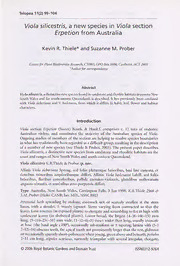
Viola silicestris, a new species in Viola section Erpetion from Australia

Premesse a Cassandra
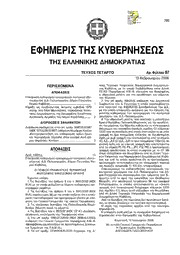
Greek Government Gazette: Part 4, 2006 no. 87

Bills as enacted, 2006-2007, No.81-151

The Echo

The Real Fairy Folk by Louise Jamison

La Maternitat d’Elna

The World of Juba II and Kleopatra Selene: Royal Scholarship on Rome's African Frontier (Routledge Classical Monographs)

Ecco! Grammatica italiana

Consumer Behavior: Building Marketing Strategy

Annamaachchaaryarin Kiirttanaikal’

The Australian and New Zealand Journal of Surgery 1993: Vol 63 Index

Tirun-et’un-taand-t’akattil Akapporul’
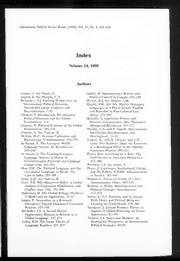
International Political Science Review 1993: Vol 14 Index

The Frailty Myth: Redefining the Physical Potential of Women and Girls

büyükbaş hayvan yetiştirme

Dorothy by Evelyn Raymond

